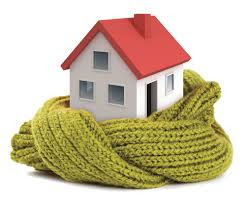Older homes are often the ideal property for a range of
buyers. They offer unique style and come with a story. Buying an old house is
exciting because we love the character that old houses have. But it’s important for a buyer to pay attention
to some key areas when buying an older home.
In this blog we will cover the key aspects as to what you need to know
before buying an old home.
·
FOUNDATION:
Over time, nature catches up with even the most solidly built homes. Older
homes are prone to a variety of foundation and structural problems, such as
major cracks or unevenness in the slab or perimeter foundation wall;
corrosion, dry rot, or moisture damage in pilings or concrete foundation
supports; damaged piers (support footings); and dry rot or moisture damage in
above-ground studs. Before confirming
the purchase, it’s important to have a professional home inspector examine the
condition of the home’s foundation. Homebuyers should ensure their home
inspector has experience reviewing older properties and pays close attention to
the foundation.
·
GET TWO
INSPECTIONS: When you are buying a home, spending another $600 or so on an
inspection is not what your idea of well spent money is, but trust me, it is
very well spent. Inspectors are human beings, and can make mistakes. Also, if
your inspection shows anything structural, get an engineer in there before you
buy. This can have some serious dollars attached down the road, and it’s better
to know up front. We would suggest using a traditional inspector, structural
engineer and a bug inspector.
·
HAZARDOUS
MATERIALS: Lead and asbestos are two hazardous materials that were used in
residential applications until relatively recently. Lead, a neurotoxic
metal that’s particularly harmful to children, is commonly found in exterior
and interior paint made before 1978. It’s also found in substantial quantities
in pre-World War II plumbing systems, and in smaller quantities in water pipes
installed before the mid-1980s. When you buy a home built before 1978, you’re
usually required to affirm your understanding that the home may contain lead
paint. If you’re uncomfortable with the idea of coexisting with lead paint,
invest in professional lead paint removal services. If your home’s plumbing
system is very old, it could still contain measurable quantities of lead. The
most cost-effective way to deal with this is a water filtration system, either
for the entire house. Though direct, prolonged exposure to asbestos is a
serious health hazard, insulation tucked away in inaccessible walls is not
likely to pose a direct risk. However, removal is recommended if you plan on
knocking down walls, expanding your home’s footprint, or attempting other
expansive projects likely to uncover asbestos-laden material.
·
ROOF:
Older homes tend to have older, possibly deteriorating roofs. This presents
numerous problems, including pest infestations, interior water damage, and
compromised (less effective) insulation. Problems stemming from a compromised
roof, particularly once interior leaks begin occurring regularly, can cost tens
of thousands of dollars to fix and may not be covered by homeowners insurance.
Before you buy an older home, assess the roof’s age and condition to the
best of your ability. Unless the seller put the roof on, he or she might not be
aware of when it was installed, so consider hiring a roof inspector ($200 to
$500) if there are obvious signs of wear.
·
INSULATION:
So heating a big old house is expensive. The insulation within the home will be the material that
protects you from the cool Canadian wintertime and seals in the warmth. It’s
the material that will also allow you to reduce your home heating bills.
Therefore the quality of the insulation and the condition of the roofing space
within the home is of the utmost importance to maintaining home comfort and to
ensure the safety of family members. Analyze the insulation carefully and try
to find old heating bills for the property before you decide to sign the
purchase contract.
·
ELECTRICAL
SYSTEM: Electrical problems fall into two categories: convenience
and safety. First, convenience: Unless their
electrical systems have been updated, older homes lack sufficient numbers of
electrical outlets to address our collective addiction to electrical
devices. Second, and more importantly, safety: The lifespan of
electrical wiring itself is basically limited by the lifespan of the wire’s
insulation. Electrical service panels and circuit breakers are also
prone to deterioration. Service panels last 60 or 70 years, while breakers last
30 or 40. Failing panels and breakers can cause shock, power failure, fire, and
other dangers. Note that water damage, fire, pest infestation, and other
unusual events can harm some or all of an electrical system’s components,
necessitating repair or replacement long before they reach their life expectancy.
Electrical work is dangerous and confusing for novices, so avoid taking
the DIY route with your electrical project. Instead, hire a licensed
electrician.
·
INSURANCE
OPTIONS: One cost few buyers consider before their home purchase is
insurance. Often, the price to insure an older home is far higher than the
price to insure a new property. That’s because older properties have more
potential for unseen problems to arise in future. Home inspectors can often
provide you with a better understanding on your insurance needs, and may be
able to work with you to reduce the long-term costs of insurance. You might also
consider upgrading older wiring and other areas of the older property, and
balancing these costs against the insurance cost for the property.
Older homes can provide an exceptional living
experience within prestigious settings. But research is a critical element of
the buying process. Speak with Jeevan Punni at 416-371-3737 to help you
move into that stylish older property.
Editor Neha Charan









No comments :
Post a Comment